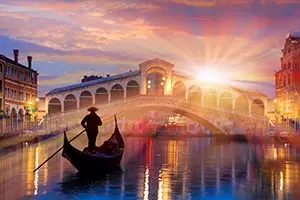 In some form or other, the truth is that gambling has been existing for hundreds if not thousands of years. Surprising or not, gambling is also linked to the history of humanity itself.
In some form or other, the truth is that gambling has been existing for hundreds if not thousands of years. Surprising or not, gambling is also linked to the history of humanity itself.
Signs of rudimental games of chance were discovered on tiles in ancient China, while the oldest known dice were dug out in Egypt. What is even more, scenes on Roman and Greek pottery show that betting on animal fights was something quite usual and common back then. Also, it is believed that animals would be bred for that exact purpose leading us to the conclusion that people simply love to gamble and do so whenever possible.
Around 200 BC, people played ‘white pigeon ticket’ in gambling houses in China but the governor had to permit it first. He would receive a portion of the profits while the winnings were usually used to fund different state works. Many people do not know it but two of the most prestigious and popular universities in the world – Yale and Harvard, were both initially funded with lottery money.
As believed by many historians, playing cards first appeared in ancient China (9th century) even though the games played back then are unspecified. However, the cards resemble the ones used nowadays. Those cards bore human forms. When games spread throughout Europe, the forms we are more familiar with, such as Queens and Kings, began to appear.
Gambling became more regulated and organised as it spread and evolved throughout society.
In the 17th century, the first gambling houses appeared in Italy. The Ridotto came into existence in Venice in 1638 to offer regulated and more organised gambling environment. In the 19th century, casinos started to spread throughout Europe. Let’s go decades and centuries back to find out more about the first modern casino in the whole world.
The Name of the Game
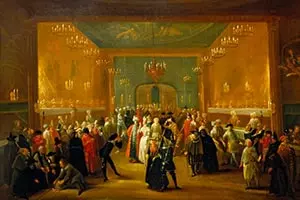 It is not easy to dig into the meaning of the word “casino”. The term itself originates from Latin (“casa” meaning “cottage”). However, in Italian, the word was commonly used to refer to a small villa in the country, summerhouse or a social club. During the 19th century, the word “casino” meant other public buildings where pleasant activities were held, such places were normally built on the grounds of huger Italian palazzo or villa. They were used to host public entertainment activities, such as music listening, dancing, gambling, and sports. Actually, some of those places had never ever hosted a game. An example of this is Hanko Casino which was a banquet hall, or the Copenhagen Casino which was a theatre.
It is not easy to dig into the meaning of the word “casino”. The term itself originates from Latin (“casa” meaning “cottage”). However, in Italian, the word was commonly used to refer to a small villa in the country, summerhouse or a social club. During the 19th century, the word “casino” meant other public buildings where pleasant activities were held, such places were normally built on the grounds of huger Italian palazzo or villa. They were used to host public entertainment activities, such as music listening, dancing, gambling, and sports. Actually, some of those places had never ever hosted a game. An example of this is Hanko Casino which was a banquet hall, or the Copenhagen Casino which was a theatre.
Slowly, the accent has changed place, and the word “casino” got to mean a brothel, a messy and noisy place. While in modern-day Italian, “casinó” is used for the gaming house.
Gambling in Italy
 As humanity has been gambling throughout most of its existence all over the map, it seems like the first casino which fits the definition was established in Italy, centuries ago.
As humanity has been gambling throughout most of its existence all over the map, it seems like the first casino which fits the definition was established in Italy, centuries ago.
Gambling has been widely popular since the Roman Empire (or even, earlier). There was a famous board game called “Ludus Duodecim Scriptorum” (or “XII scripta”, meaning “12 markings”). The game was very similar to the modern-day backgammon. It was played with 15 pieces and 3 dice. The very first mention of the game that we are informed about is in a series of elegies written by the poet Ovid in his “The Art of Love” (2 AD).
Throughout the cultural and political turmoil, meaning the collapse of the Empire and the prosper of the Italian Republic, gambling managed to remain quite popular among the Italians. In fact, bingo and baccarat were invented there. Not only did Giacomo Casanova earn his fame as a lover in Italy but also a gambler. According to his memoirs, he mentions games of chance such as Biribi (a game akin to the lottery) and whist. He was trained by professional players and would also team up with them in order to obtain big winnings. However, he would not turn into an expert gambler because of his temper which caused him a lot of troubles. As he says “I had neither prudence enough to leave off when fortune was adverse, nor sufficient control over myself to stop when I had won.”
The First Gambling House
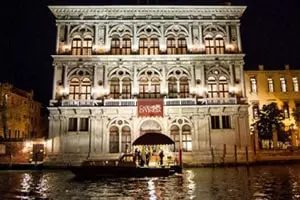 The Great Council of Venice established the first-ever official gambling house in 1638 – Casino di Venezia (The Ridotto di San Moise, as it was originally named). Even though there were a few attempts to ban the gambling dens (which were privately-owned by the way) who were mostly visited by the nobility in Venice, they failed. That place was named “Il Ridotto” which would translate as “the private room”. Initially, “ridotti” were just a small, fancy apartment which was used for a range of amusements. The name comes from the verb “ridurre”, meaning “to make something private”. The very same word was used to refer to the theatre foyer where people would gather together and engage in many discussions, gamble, or any other form of entertainment.
The Great Council of Venice established the first-ever official gambling house in 1638 – Casino di Venezia (The Ridotto di San Moise, as it was originally named). Even though there were a few attempts to ban the gambling dens (which were privately-owned by the way) who were mostly visited by the nobility in Venice, they failed. That place was named “Il Ridotto” which would translate as “the private room”. Initially, “ridotti” were just a small, fancy apartment which was used for a range of amusements. The name comes from the verb “ridurre”, meaning “to make something private”. The very same word was used to refer to the theatre foyer where people would gather together and engage in many discussions, gamble, or any other form of entertainment.
Technically, gambling was still illegal back then but seldom was the ridotto visited by the authorities – obviously, the nobles simply knew when the Italian Inquisition was expected to come. The less wealthy people, however, were gambling as well, but they did not have a nice place to do so.
When the Venetian government decided to run a gambling house, it was because they thought they could control it better and therefore make a lot of money. The Ridotto was a four-story gambling house with a number of rooms where the wealthy people played card games and could enjoy a nice selection of beverages and food. The two main reasons for which this gambling house was so important are: Ridotto was the first government-sanctioned gambling house in the world and the first ever which was open to the general public. Games with high stakes would mean that the people who played were generally wealthy, but principally the Ridotto turns Venice into the birthplace of the casino. Most of the popular modern casino games were indeed invented in France, however, the word “casino” was initially a small place for Italians to meet in for different social occasions and entertainment.
There were about 20 ridotti of Venice and in all of them gambling was the main activity. Many young aristocrats had to sell their military duties to poor souls who needed money. Singers, poets, servants, flower girls, foreign visitors, merchants have all been to the ridotto. Not only had Casanova been there but many other famous people, too. Carlo Goldoni enjoyed a willing audience to listen to his wonderful stories. Famous painters such as Giovanni Battista Tiepolo, Pietro Longhi and Francesco Guardi found inspiration in the barely-lit establishment.
Even though Il Ridotto was not specified as a casino, it would do just what today casinos do: it offered gambling services supervised by official authorities during the Venice Carnival Season.
Il Ridotto was favourably positioned nearby the church of San Moise, in Palazzo Dandolo which was owned by a famous patrician family, the Dandalos. The casino was open to the public but most of the citizens could not afford to play there. There was a very strict formal dress code and high stakes which eventually acted as a filter so that only the wealthy people would enter. Less affluent people were banned from placing any bets at the casino’s tables. All of the players had to wear black and white masks (“bauta” – it is a mask that covers the whole face, not showing the mouth and with a stubborn chin line) and Tricorne hats. The only people who could appear bare-faced were the croupiers and the “barnabotti” (class of impoverished nobility).
The games which, to our knowledge, were played at Il Ridotto include Biribi and Basetta. Biribi is a game of chance resembling lottery or roulette with up to 70 different outcomes. The gameplay is very simple: players would put their stakes on numbers they would like to back and then the banker would draw a ticket with a number, corresponding to those on the board. The banker says the number loudly. If there is a player who has a bet on that exact same number, he or she receives 64 times the stake; the rest of the stakes goes to the banker. Basetta is a gambling card game which was thought to be one of the most polite games. The game was mainly played by people of high ranks because of the great losses and gains which might be accrued by players. Basetta resembles both poker and blackjack at the same time.
Il Ridotto flourished till 1774, when the leader of the reforming party, Giorgio Pisani, made a stand that the casino should be closed. He was adamant that Ridotto should be closed with the purpose to “preserve the piety, sound discipline, and moderate behaviour”. Apart from those more moralistic aspects of gambling, there was another reason for Pisani insisting on closing the casino. It was that it was ruining the wealthy Venetians. It was quite frequent that somebody’s all money would be lost in the gambling house just in several hours. In the proximity of the casino, there were thieves, prostitutes, pickpockets who gathered in swarms, all wanting to try how lucky they are with a rich casino client.
The very same year the casino was closed.
The Doge of Venice closes all ridotti in the late 18th century because of the suspicion of conspiracy, just to be opened again as state-run gambling houses. All the profits went to the impoverished Republic. One of the fanciest ridotti of them all, Ridotto San Moise, was the place where the quite well-known opera composer Guiseppe Verdi celebrated the huge success of his famous opera Rigoletto.
New Building – New Beginning
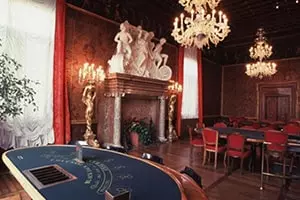 Just because the casino closed doors, it did not mark the end of it. Even without the actual venture, people did not stop to gamble, they did not lose a bit of interest and excitement for betting and playing different games. In spite of that, it is of great importance to note that even though the casino claims to be the first in the whole world, actually it did not exist, at least not physically between 1774 and 1959 when it was finally reopened. It was reborn at the place of Ca’Vendarmin Calergi – a gorgeous palace located on the Grand Canal in Caranreggio in Venice. As every building tells a story, let’s give an ear to the one behind the new place.
Just because the casino closed doors, it did not mark the end of it. Even without the actual venture, people did not stop to gamble, they did not lose a bit of interest and excitement for betting and playing different games. In spite of that, it is of great importance to note that even though the casino claims to be the first in the whole world, actually it did not exist, at least not physically between 1774 and 1959 when it was finally reopened. It was reborn at the place of Ca’Vendarmin Calergi – a gorgeous palace located on the Grand Canal in Caranreggio in Venice. As every building tells a story, let’s give an ear to the one behind the new place.
Ca’Vendramin Calergi – Then and Now
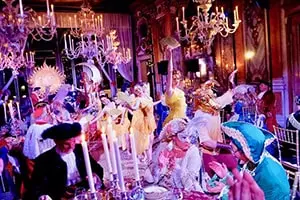 The building itself was designed in the 15th century but finished in the 16th century. The architect of it was Mauro Condussi who was also known for bringing the classic Renaissance style to Venice. 28 years was the period needed to finish the building which was thought to be a pretty short period, having in mind the technique that was available back then. With three floors and access to the Grand Canal, the palace was truly impressive. Its first owners were the Loredan family but they were forced to sell it due to series of unfortunate events. The Duke of Brunswick-Lüneburg, Eric II, was the new owner of the place, however, in the following years, the owner changed again.
The building itself was designed in the 15th century but finished in the 16th century. The architect of it was Mauro Condussi who was also known for bringing the classic Renaissance style to Venice. 28 years was the period needed to finish the building which was thought to be a pretty short period, having in mind the technique that was available back then. With three floors and access to the Grand Canal, the palace was truly impressive. Its first owners were the Loredan family but they were forced to sell it due to series of unfortunate events. The Duke of Brunswick-Lüneburg, Eric II, was the new owner of the place, however, in the following years, the owner changed again.
The palace became the property of Vittore Calergi who wanted to remodel and expand it. He got help from the architect Vincenzo Scamozzi who built the so-known “White Wing”. It had huge windows with a breath-taking garden view. Years later, in 1739, the Vendramini family inherited the building. In 1844, the last of their family sold it to the Duchess of Berry, Marie- Caroline de Bourbon-Sicile. Surprising or not, the palace kept being resold to different owners. It was in 1946 when it eventually became a property of the City Council of Venice. The authorities, of course, reconsidered and changed their position. It was the reason why they decided to reopen Casino di Venezia in 1959 in a new home – Ca’Vendrimin Calergi.
New Home
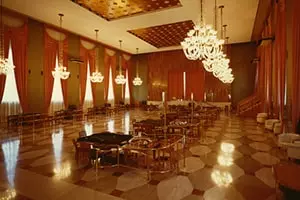 Today, the casino shares a home with Wagner Museum and it has been honouring the beautiful side of Venice ever since 1995. The casino is placed on all three floors where you can find numerous rooms for playing video poker, roulette games, slots, poker, baccarat and blackjack. However, keep in mind that the formal dress code is still a must. Wear elegant clothes if you want to tune with the fancy atmosphere and play games. The casino offers Chemin de Fer version of Baccarat which can be seldom encountered but it is quite interesting. In the game, the house serves as a card-dealer and a mediator while the player on the table is the banker.
Today, the casino shares a home with Wagner Museum and it has been honouring the beautiful side of Venice ever since 1995. The casino is placed on all three floors where you can find numerous rooms for playing video poker, roulette games, slots, poker, baccarat and blackjack. However, keep in mind that the formal dress code is still a must. Wear elegant clothes if you want to tune with the fancy atmosphere and play games. The casino offers Chemin de Fer version of Baccarat which can be seldom encountered but it is quite interesting. In the game, the house serves as a card-dealer and a mediator while the player on the table is the banker.
There are many other professionally hosted games which you can enjoy. Usually, the minimum bet is $10. Even if you are not into gambling that much, it is highly recommended to visit the casino and simply admire the architecture in a classic Renaissance style. Its gorgeous and luxurious design will definitely win your heart. If you ever have the chance to visit Italy, make sure to visit one of the oldest buildings in Venice. Take a glimpse at the first modern casino in the world.
The Ridotto Painting
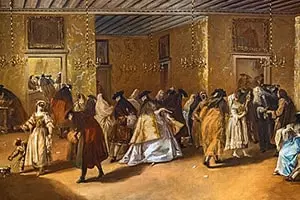 The aforementioned painter, Longhi, gives us the best glimpse in the life of the wealthy and noble people in his famous painting bearing the name of The Ridotto. As we already said, The Ridotto was the most popular casino in Venice. In addition, it was widely known in and around Europe as the place of ultimate decadence. Gambling lovers from all over the world, people of different social classes made it to Ridotto to simply enjoy the game. The mysteriousity of the place was enhanced thanks to the rule for wearing a mask. That casino used to provide the needed escape from the real world, however, it was a dangerous place. It was thought to be a dangerous place because it put the nobility’s level of decorum at risk. Many rich people would leave the gambling house impoverished after a night of playing. Besides, thieves waited on clients in the streets surrounding the place.
The aforementioned painter, Longhi, gives us the best glimpse in the life of the wealthy and noble people in his famous painting bearing the name of The Ridotto. As we already said, The Ridotto was the most popular casino in Venice. In addition, it was widely known in and around Europe as the place of ultimate decadence. Gambling lovers from all over the world, people of different social classes made it to Ridotto to simply enjoy the game. The mysteriousity of the place was enhanced thanks to the rule for wearing a mask. That casino used to provide the needed escape from the real world, however, it was a dangerous place. It was thought to be a dangerous place because it put the nobility’s level of decorum at risk. Many rich people would leave the gambling house impoverished after a night of playing. Besides, thieves waited on clients in the streets surrounding the place.
Often, prostitutes hid behind those masks to tempt wealthy men. The Council of Ten once described the casino as “a detestable mix of patricians, foreigners, and plebeians, of honest women, and public prostitutes, of cards and weapons by day and by night that confound every status, consume very fortune, and corrupt every custom”. The government had to close casinos because it was believed they committed crimes against human morality.
In the painting The Ridotto by Longhi, we are given a bird’s eye view of what seems to be the very main hall for gambling in the casino. The room is full of people, most of whom are masked. The viewer is showed the fullest extent to which those masks were worn. Those masks were a true necessity, noting that people in the casino were of such illicit quality that for the nobility. Masks can be viewed as an accessory which protects one’s level in society and conceals one’s true identity.
There is another famous painting of The Ridotto, painted by a contemporary of Longhi – Francesco Guardi. He used to be a member of the so-called view painters who painted grand views of Venice’s cityscape. His painting is quite different from the one painted by Longhi. Here, the painter depicts the grandeur of the hall to a larger scale. The people are smaller and the viewer cannot clearly see the faces of those figures.
It is true that they also wear masks but it does require a much closer examination. Looking at the painting, the viewer may have a more clear vision of the grandeur of the place rather than leave with the impression of the people who had visited it. In comparison, the image by Longhi provides a true glimpse into the casino and the people who visited it. His painting can also serve as evidence of the public because it focuses more on the pleasures to be had by the noble people who could actually afford it. It was indeed the nobility who frequented the place and enjoyed it to the fullest. It does make sense that Longhi’s patrons would enjoy paintings of themselves, having in mind that they were also noble people.
Since gambling has been existing for so many ages we can conclude that it will keep on existing for many more years to come. Here and now, there are gaming clubs on every corner, casinos in every hotel, online games can be played from anywhere, games can be played 24 hours a day on our phones. But as we already found out, it has not always been like that.